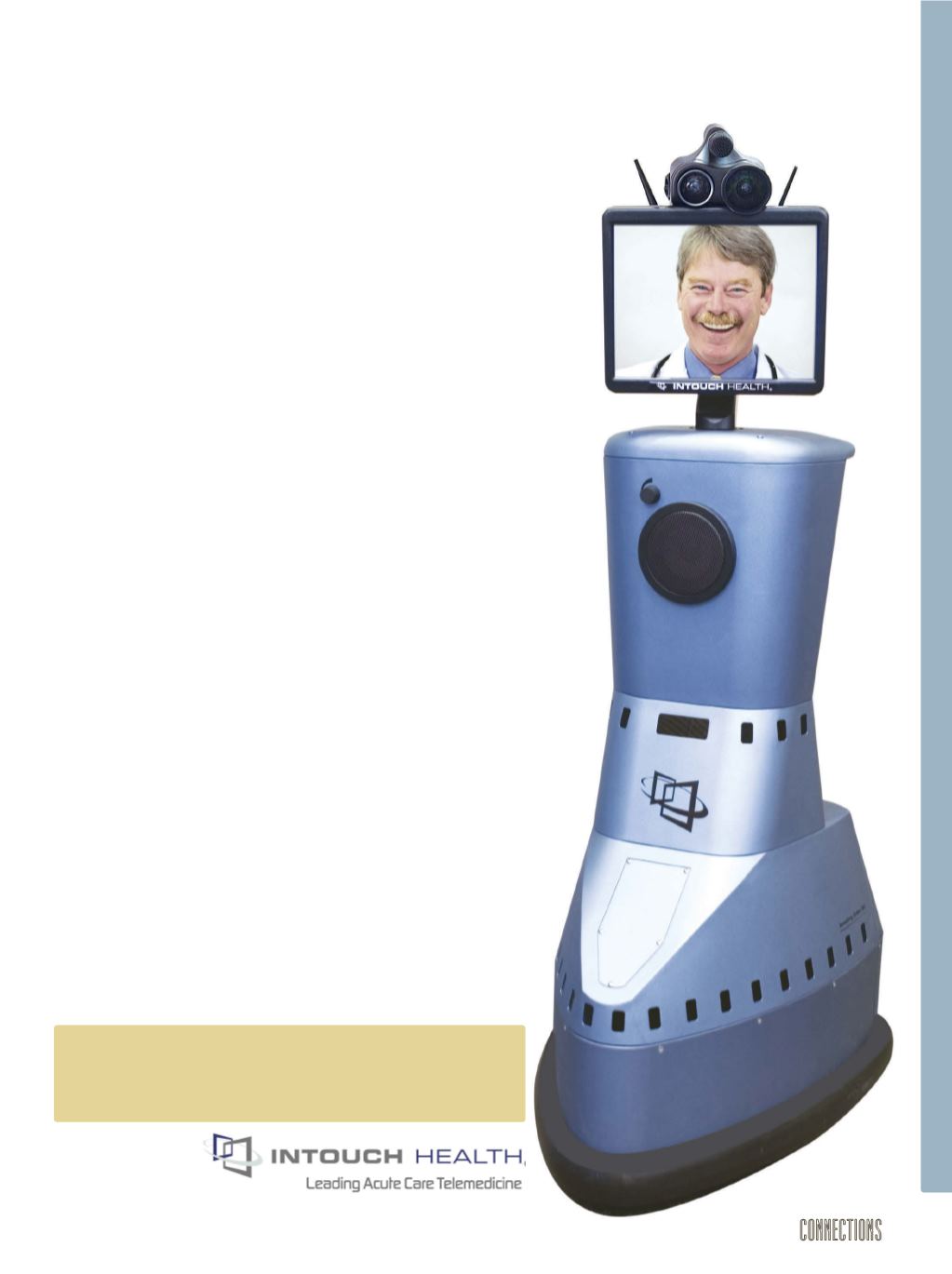
IN
partnership with Providence
Telestroke Network, Gritman
Medical Center has a new tool to
aid in the diagnosis and treatment
of stroke patients—the RP-7i, a
telestroke robot. Telestroke pro-
vides around-the-clock access to
acute stroke experts, which means
higher quality care for stroke
patients, improved outcomes and
lower costs.
How telestroke works
When a patient is admitted to
the emergency department, an
emergency physician evaluates the
patient and determines whether
a telestroke evaluation is needed.
e telestroke mobile unit is moved
to the patient’s bedside where the
physician, patient and family mem-
bers speak directly to the telestroke
neurologist. A er the consultation,
emergency sta and the telestroke
neurologist determine the best
course of care, whether that means
treatment, admission or transfer to
another hospital.
Critical Access Hospitals around
the country are bene ting from
telemedicine partnerships. Stroke
experts are available 24 hours a day,
7 days a week. Response time for
consults with fellowship-trained
stroke neurologists is typically within
ve minutes.
Every minute counts
According to the American
Stroke Association, “stroke
occurs when a blood vessel
bringing blood and oxygen to
the brain gets blocked or rup-
tures. When this happens, brain
cells don’t get the blood that they
need.” When the supply of oxy-
gen is cut o , nerve cells begin to
die within minutes. e sooner a
patient is diagnosed and treated,
the less damage is done to the
brain.
“Telemedicine allows for early
involvement in guiding the direc-
tion of care that is best for the
patient,” said Mark McGahan,
Director of Gritman Emergency
Services. “By having access to neu-
rologists who are experts in stroke
care, we can provide the appro-
priate level of care regardless of
whether the patient is treated
here at Gritman or transferred
to another hospital.”
McGahan expects to see
a potential decrease in the
number of patients trans-
ferred for stroke care. e
ability to treat patients
closer to home and family
makes the coordination of
follow-up care easier, re-
duces stress for the patient
and improves recovery.
Stroke experts are available 24 hours a day, 7 days a
week. Response time for consults with fellowship-trained
stroke neurologists is typically within five minutes.
connections
w
5
E M E R G E N C Y M E D I C I N E
What a robot can do
for stroke patients


